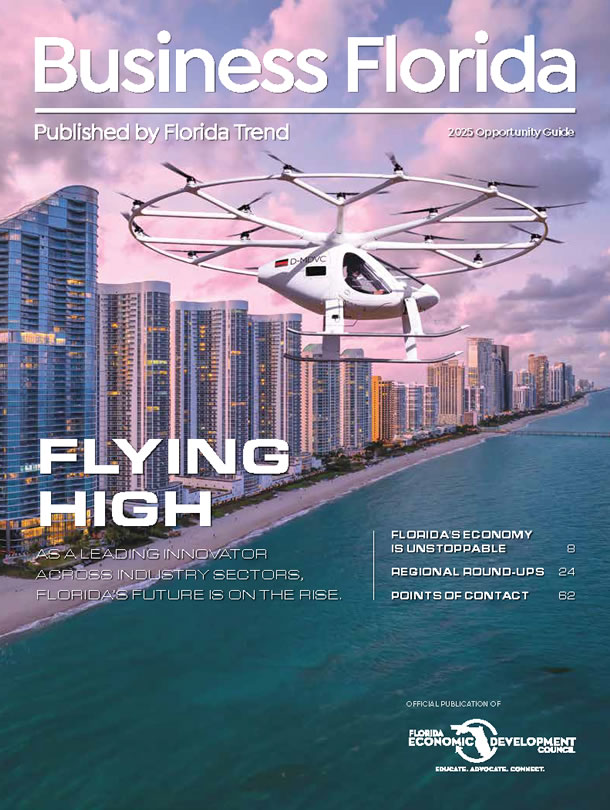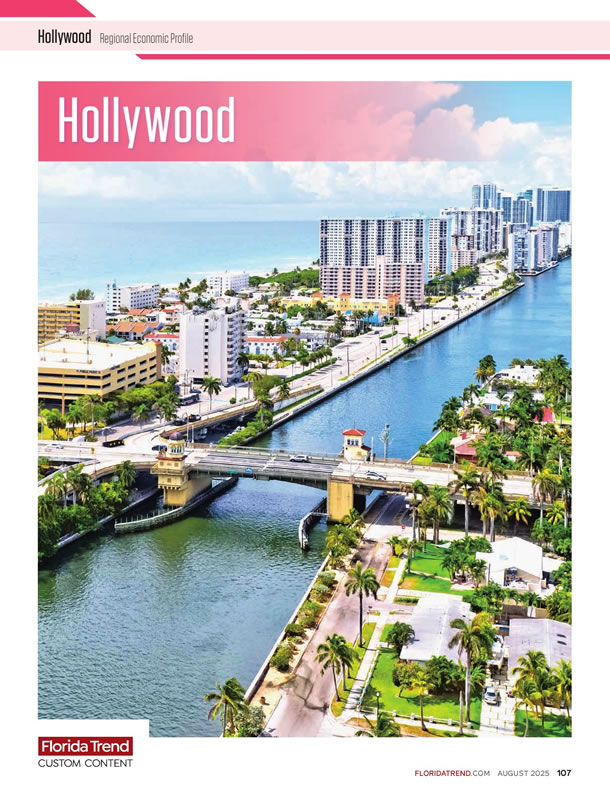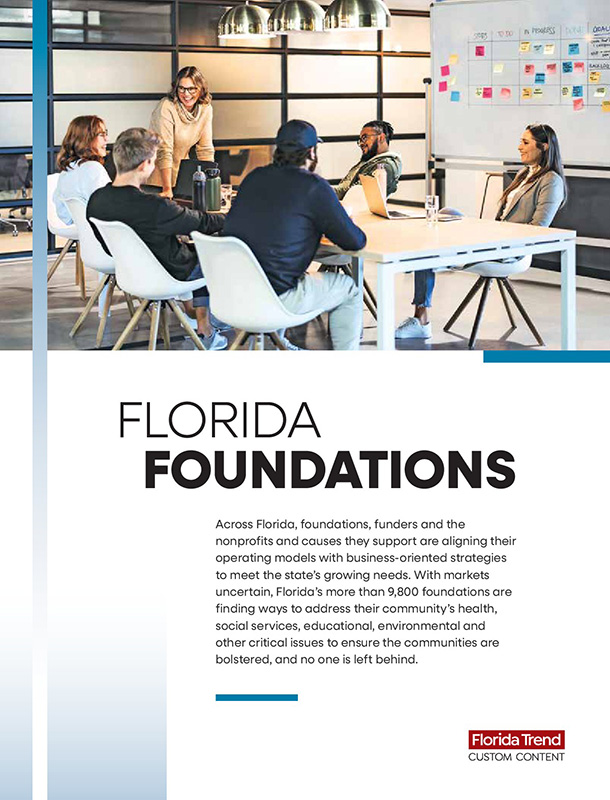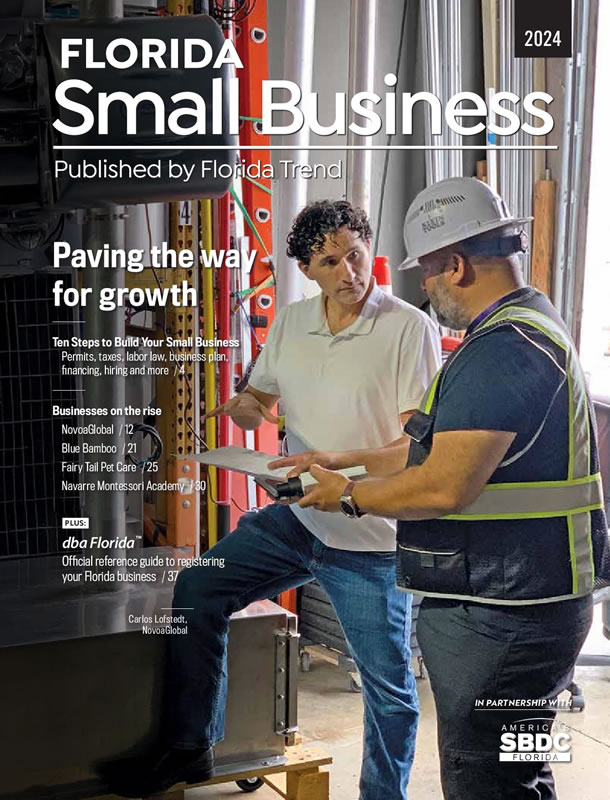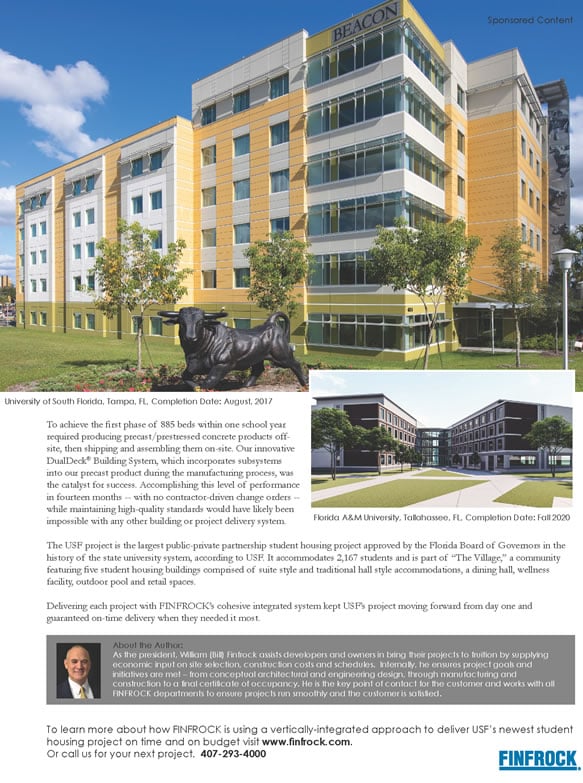A Wednesday morning finds a line of loyal customers growing at Euro Deli, a small store that Polish immigrant Dorota Kotowska and her family have run for 20 years in Deerfield Beach in Southeast Florida. The shoppers come for a taste of their native Poland — kielbasa, pierogis and packaged food brands that are household names from Gdansk to Krakow. Kotowska, as Lent draws toward Easter, displays baskets of brightly colored pisanki — hand-painted wooden eggs. “My dream was always to open a store — even in Poland,” she says.
Business looks good, but Kotowska has concerns. A few doors down from her deli in the same shopping center — just past a huge sign in the Cyrillic alphabet advertising shipping services in Russian — a new store called Euroland opened this year. It’s far larger than Kotowska’s, with scores of bustling bilingual employees staffing deli, bakery, produce, fish and meat departments. There’s a coffee bar, rows of ready-to-eat soups and dishes, al fresco seating and packaged goods with shelf labels showing the flag of each product’s European country of origin.
For Kotowska, it’s like a mom-and-pop store owner waking up to find Walmart moved in.
For Florida, the two stores illustrate the growing Eastern European population of the state, a relatively recent phenomenon.
A century and more ago, Eastern Europeans immigrated not to agricultural Florida but to Chicago and other northern cities where they found fellow countrymen and hard livings in mills, factories and resource extraction. The rare Eastern European enclaves in Florida centered on farming — in Hernando or Seminole or Flagler County. “Florida just didn’t have that heavy industry,” says Florida historian Gary Mormino, University of South Florida professor emeritus.
Today, the U.S. Census reports Florida is home to 167,150 people born in Eastern Europe. That represents a fraction of the 4.5 million people — one in five Floridians — born abroad. But the Eastern European-born population increased 34% in 2022 from 2012, albeit off a small base, a faster growth rate than Florida’s foreign-born population overall and faster than immigration from Latin America and every continent except South America. Florida, the third largest state by population, is the fourth largest state for Eastern European immigrants, behind New York, Illinois and California.
Europeans’ share of the U.S. foreign-born population began to shrink late in the last century as the 1965 immigration law widened the door for non- Europeans. At the same time, improving economic conditions in Western Europe made emigration less attractive and the Iron Curtain kept people from leaving Eastern Europe. For years, the Eastern European population in Florida, especially South Florida, consisted mostly of Jewish immigrants, many of them retirees from northern cities. “I can remember this, when I first got to Miami, my wife and I went over to South Beach — elderly Jews from Eastern Europe — this is a picture I still have in my head — in the strap chairs, reading Yiddish newspapers. There was a significant connection to Eastern Europe,” says University of Miami geography professor Ira Sheskin, whose work includes Jewish population trends.
Today, only 3% of Broward Jewish adults and 5% of Miami-Dade Jewish adults were born in Eastern Europe and the former Soviet Union. “The Eastern European connection is just not what it used to be a generation ago,” Sheskin says. Rather than Yiddish, Jewish people from Russia today read Russian-language publications.
Geopolitical Shifts
Eastern European emigration picked up dramatically after the fall of the Berlin Wall in 1989, the dissolution of the Soviet Union in 1991 and the breakup of Czechoslovakia and Yugoslavia, only to slacken as former Eastern Bloc countries gained membership in the European Union.
U.S. law carved out paths for some, such as religious minorities, workers in the sciences and students and, for Eastern Europeans with no family or work connections, the U.S. “diversity” lottery. Over decades, concentrations of East Europeans popped up in parts of Florida. North Port in Sarasota County became a center for Ukrainians and other Eastern Europeans drawn by North Port’s Warm Mineral Springs, the only of its kind in Florida with a parallel to their homelands. The Florida Keys in the 1990s saw an influx of Poles after recruiters for lodging companies placed help-wanted ads for housekeepers in Polish-language newspapers in northern cities.
War has generated pulses of newcomers. Jacksonville became home to people from Bosnia after refugees were settled there by Lutheran Family Services in the 1990s. Today, Duval County’s Bosnian immigrants number nearly 3,600 — the largest concentration of Bosnians in Florida and the largest Eastern European group in that county. Immigration to Florida from Ukraine and Russia increased after Russia’s 2022 invasion of Ukraine, which set off “Europe’s largest displacement crisis since World War II,” says Jeanne Batalova, senior policy analyst with the Migration Policy Institute in Washington, D.C.
The number of Ukraine-born Floridians increased 73% in 2022 from 2012, the Census reports. Yuliia Kovalchuk, the marketing chief for Mega Active Retail System, the parent of the large Euroland store that opened this year in Deerfield Beach by Kotowska’s deli, originally was from Mariupol in Ukraine and then Kyiv before moving to Florida because of the war.
In 2022, a month after Russia invaded Ukraine, a group of 15 to 30 well-dressed, luggage-toting Eastern European unauthorized immigrants landed on Duval Street in Key West by boat from Cuba. Historically, Eastern Europeans new to Florida arrive by plane on family reunification visas.
Euro Deli owner Kotowska, her husband Andrzej and their two children arrived by plane in 1995. Though Kotowska’s mother lived in Hollywood and Andrzej had family in Chicago, homesickness hit hard. “After one year, I was crying all the time,” she recalls, still tearing up at the memory. Andrzej worked as a roofer — and still drives for the roofing company — while Dorota cleaned houses before opening her store in 2004.
North Broward has two other Polish grocer-delis in addition to Kotowska’s Euro Deli. Self-employment — whether a Korean dry cleaner, Vietnamese nail salon, Latin American bodega or Polish deli — draws immigrants because English proficiency isn’t an issue, they lack professional networks to get a job, and overseas education or work credentials sometimes don’t transfer in the U.S. workplace.
The scale of entrepreneurship is much larger at Euroland, Kotowska’s new neighbor. The owning Pugachov family was involved in a grocery chain in Ukraine before moving to Florida in 2011 to “begin a new business journey,” says marketing head Kovalchuk. A year later, the family opened their Matryoshka Deli in Sunny Isles Beach in Miami-Dade, followed by their Europa Gourmet Store in Hollywood and Euroland in north Broward in January. More than 2,000 people turned out for the grand opening. The parent of the three operations, Mega Active Retail System, employs more than 350, a few of whom work remotely from Ukraine. Euroland at 25,000 square feet is the largest European grocery store in Florida, Kovalchuk says.
Deerfield Beach was chosen because of its proximity to European immigrants and a public “who appreciates European culinary traditions,” she says. Broward and Palm Beach counties combined are home to 41,804 Eastern Europeans, according to the Census. “Our goal at Euroland is to bring a piece of Europe to Florida, catering to the diverse tastes of Europeans, locals, and everyone in between who appreciates the rich culinary heritage of Europe,” Kovalchuk says. The company wants to expand in Florida and potentially elsewhere in America.
Migration Insights
The growth in immigration portends growth in business between Florida and Eastern Europe. Michal Rzeznik, the head of the foreign trade office in the United States for the Polish Investment & Trade Agency, says Polish immigrants in the U.S. are “helping spread the word” about Poland’s capabilities. “This can allow us to take the full advantage,” he says.
The agency and Polboat, Poland’s marine industry and water sports chamber of commerce, booked a pavilion, adorned in Poland’s red and white, at a prominent international boat show in Miami in February to showcase Poland’s boat-building prowess. (In the days of Soviet control, says Michal Bak, Polboat’s president, Poland was the Eastern Bloc’s designated ship builder. The country has a skilled marine workforce and educational institutions with specialties in the marine industry. Post-communism, the sector is known for its pleasure craft and inexpensive, quality labor.)
In addition to the big pavilion, individual Polish manufacturers had their own spaces, including the in-water exhibitions of super sailing yachts from luxury catamaran Sunreef Yachts. Meanwhile, Clearwater-based boat retailer MarineMax is the U.S. seller of Poland’s Galeon Yachts. RzeÃ...ºnik says the agency is getting ready to add a fifth U.S. office in Miami to its existing network. “This will be another milestone in the Polish-American business relationships and especially the ties between Poland and Florida,” he says.
It’s not all about business, however. While Eastern Europeans tend to be younger — with the overwhelming number still of working age nationally — Florida’s retiree share of the foreign-born likely is higher.
Kotowska, the deli owner, says Florida is home to “so many Polish people who went to Florida from Chicago and New York.” Says Batalova, the Migration Policy Institute senior analyst, “They’re becoming like all Americans, right? Get their piece of sunshine after all those years working.” And others, of working age, are mirroring America’s internal migration patterns. “They are part of the domestic migration out of what they call the Rust Belt into the Sunbelt states and communities. So in this way, they are very much a part of the American story of migration,” Batalova says.
She says the increased arrivals in recent years signal the future contours of the foreign-born population. “The most recent trends, because they are so robust, they are important. Understanding who has come in the past 10 years gives kind of a clue of who’s going to come in the next 20 years,” Batalova says.
Dorota Kotowska, meanwhile, is thinking about the future of her store. The growing Polish population is encouraging. But then there’s that new Euroland. The shopping center is slated for an additional building in 2025. Kotowska and her family — she’s now up to three grandchildren and a fourth on the way — may take space in the new building with better visibility and foot traffic on busy Hillsboro Boulevard, the major east-west artery in Deerfield. “That is just the hope, as we do not know how sales will be due to our nextdoor competition,” says Dorota’s and Andrzej’s daughter, Urszula. “Every day is a little different. It always has been, always will be. Just like everywhere there are ups and downs. We have seen a slight cut in sales, nothing drastic to make us close our doors just yet. We have the year to monitor our sales and hopefully make the right decision.”
Busy Routes
Airline passenger traffic between Eastern Europe and Florida increased 18% to 400,000 in 2023 from 2022, though that’s still down 25% from prepandemic levels, mostly due to a drop in Russian traffic, says Joshua Gillin, senior manager of communications at Tampa International Airport, who researched Florida-Eastern Europe passenger patterns for FLORIDA TREND. Russia’s Aeroflot connection between Miami and Moscow ended with sanctions on Russia in 2022. The only nonstop route from Florida to Eastern Europe is LOT Polish Airlines’ flight to Warsaw from Miami, which the airline began offering in 2019.







